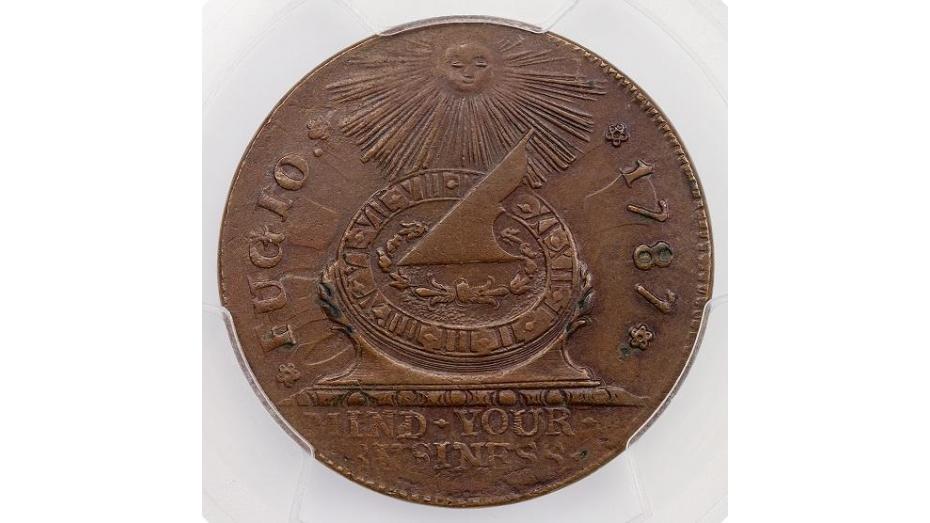The Fugio Cent: The Coin That Started It All
American coinage has long been characterized by a rich and remarkable history. From classic coins like the Saint-Gaudens Gold Double Eagle to modern examples such as the American Silver Eagle, the United States has continually produced some of the world’s most stunning coinage. While so many American coins have gained acclaim over centuries, one of the most important coins to be produced was the 1787 Fugio Cent.
Although the date 1787 can be seen on the obverse of the Fugio Cent, every known example was struck in the year 1788. This monumental coin was minted for one year only and is known as the first-ever circulated coin of the United States of America. To add to the Fugio Cent’s significance, it was designed by one of the greatest minds and most iconic figures in the history of our nation, Benjamin Franklin.
Benjamin Franklin’s resume boasts a vast array of achievements, the most significant of which was co-authoring the Declaration of Independence. Given that Franklin helped pen the document that established the United States as an autonomous nation, it was only fitting that he spearheaded designing the country’s coinage. As soon as he was granted Congressional approval in 1787, he got right to the drawing board and produced his design for the Fugio Cent.
The Fugio Cent’s obverse displays a sun radiating its light onto the face of a sundial. Below the sundial is an inscription of, “Mind Your Business.” Historians believe this motto was influenced by Franklin’s status as a prominent businessman who believed in the virtue of hard work. Etched into the left-hand side of the obverse is the Latin word “Fugio,” which translates to, “I Fly,” in reference to time flying by. Together, “I Fly,” “Mind Your Business,” and the sundial imply that as time continues to pass, individuals must choose to spend it wisely. The coin’s reverse depicts the phrase, “We Are One,” surrounded by thirteen interlinking chains, meant to represent the unbreakable bond between the nation’s original thirteen colonies.
As soon as the design for America’s first cent was approved, several copper makers petitioned the government for approval to strike the coins. The contract was ultimately awarded to a man named James Jarvis, who had given a $10,000 bribe to the head of the Treasury Board, William Durer. Jarvis’ contract required that he produce 300 tons worth of Fugio Cents. To get started, the Federal Government gave him thirty tons of copper, all of which he was expected to pay for at the end of his contract.
Rather than use the copper as instructed, Jarvis struck roughly 3.5 million 1787 Connecticut coppers. Since these coins weighed less than Fugio Cents, producing them was far more profitable for Jarvis. In 1788, when Congress realized that Jarvis had only produced a fraction of what his contract required, the contract was terminated. Though Congress tried to proceed with the Fugio Cent’s production, a national copper panic devalued the coins and brought an end to their production.
Since not enough Fugio Cents were struck to meet the nation’s demand, the coins saw very little circulation. The coin was all but forgotten until 1856, when a hoard of several thousand was discovered at the Bank of New York. The bankers paid little mind to the coins, though, simply putting them in bags and storing them away. The coins sat in those bags until they were rediscovered in 1926, at which point the Bank decided to give them away as souvenirs to clients. Then in 1948, most of the remaining 1,641 coins from this hoard were either donated to the American Numismatic Society or sold to collectors.
Today, the few Fugio Cents that have managed to survive are regarded as true numismatic treasures. Just 3,811 Fugio Cents have been graded between NGC and PCGS, making examples of these coins simply difficult to find in any condition. With its status as the very first circulating American coin and its design crafted by American Founding Father Benjamin Franklin, any example of a Fugio Cent can easily belong in a museum exhibit.






